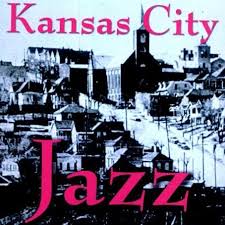 |
| Kansas City jazz, which came into its own in the 1920s and 1930s, is distinguished by the following musical elements:
A preference for a 4/4 beat over the 2/4 beat found in other jazz styles of the time. As a result, Kansas City jazz had a more relaxed, fluid sound than other jazz styles. Extended soloing. Fueled by the non-stop nightlife under Political Boss Tom Pendergast, Kansas City jam sessions went on well past sunrise, fostering a highly competitive atmosphere and a unique jazz culture in which the goal was to "say something" with one's instrument, rather than simply show off one's technique. It was not uncommon for one "song" to be performed for several hours, with the best musicians often soloing for dozens of choruses at a time. So-called "head arrangements". The KC big bands often played by memory, composing and arranging the music collectively, rather than sight-reading as other big bands of the time did. This further contributed to the loose, spontaneous Kansas City sound. A heavy blues influence, with KC songs often based around a 12-bar blues structure, rather than the 8-bar jazz standard. One of the most recognizable characteristics of Kansas City jazz is frequent, elaborate riffing by the different sections. Riffs were often created - or even improvised - collectively, and took many forms: a) one section riffing alone, serving as the main focus of the music; b) one section riffing behind a soloist, adding excitement to the song; or c) two or more sections riffing in counterpoint, creating an exciting hard-swinging sound. The Count Basie signature tunes "One O'Clock Jump" and "Jumpin' at the Woodside", for example, are simply collections of complex riffs, memorized in a head arrangement, and punctuated with solos. Glenn Miller's famous swing anthem "In the Mood" closely follows the Kansas City pattern of riffing sections, and is a good example of the Kansas City style after it had been exported to the rest of the world. |
The daily diary entries from Ruth Catherine McKenzie McCoy. Her daughter, author Fran Baker, has included photos, historic notes and "old-time" recipes following the entries. Readers are welcome to comment.
Monday, September 10, 2012
Monday, September 10, 1934
Went to school. Rode with Pauline. Kind of cold. Got my lessons done. Pauline and I went walking in evening.
Subscribe to:
Post Comments (Atom)
No comments:
Post a Comment